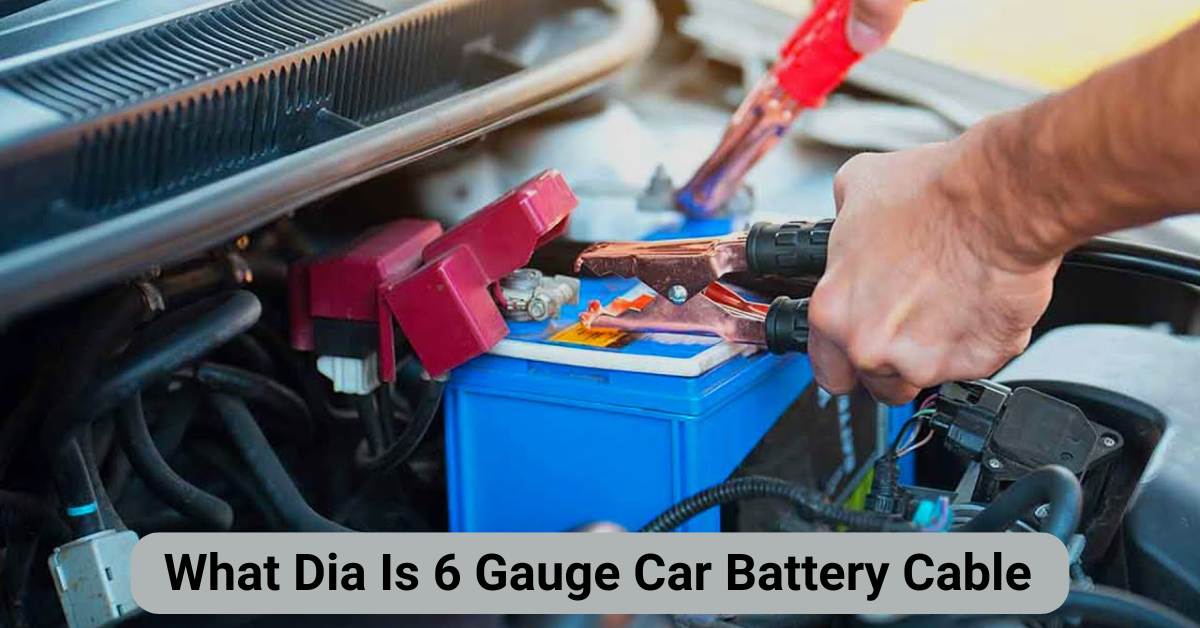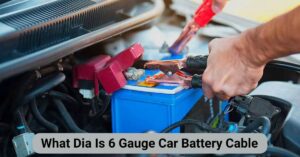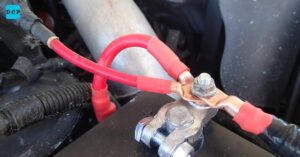Understanding the diameter of a 6 gauge car battery cable is very essential in getting the proper performance in a vehicle electrical system. A 6 gauge or AWG car battery cable has a diameter of around 0.162 inches or 4.11 millimeters and is consequently ideal for high-current application in automotive, marine and solar power systems. It’s because such an immense size of wire will let one transfer power efficiently, along with the least amount of voltage drop in even the longest cable runs.
These cables are a foundation for modern automobiles to start and charge, with their thickness ensuring the safe delivery of power from the battery to other electrical components of the vehicle.
Understanding 6 Gauge Battery Cable Specifications
Specifications of 6 gauge battery cables cover most of the critical measurements as well as characteristics. Usually, they consist of the finest stranded copper wires available with high ratings of conductivities. They can even take up to 75 amps for continuous duty while taking up to 120 amps for intermittent loads.
In effect, the diameter amounts to approximately 0.08 inches of the insulation thickness that would add up to an approximately 0.24 inch diameter of the cable itself. Then, the standardized size would ensure that it will have the same compatibility among any manufacturers and applications but would meet the safety standards.
The current-carrying capacity of 6 gauge cables depends upon the insulation type used as well as environmental conditions. For automotive applications, it is normally cross-linked polyethylene (XLPE) or premium-grade PVC insulation with excellent heat, oil, and abrasion resistance. The temperature rating is commonly between -40°F and 221°F (-40°C to 105°C).
Types of 6 Gauge Battery Cables
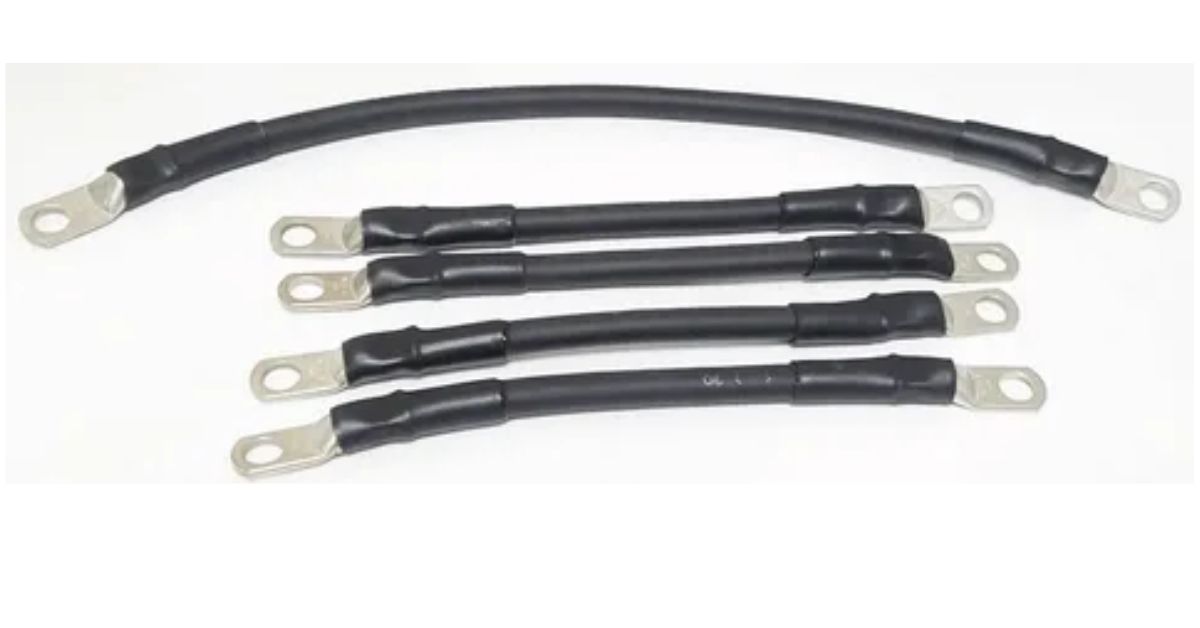
Different types of 6 gauge battery cables serve specific purposes in automotive as well as in marine usage. SGR cables are of standard flexibility and have myriad applications in general automotive.
SGT offers more flexibility and heat resistance, and SGX is the ultimate in flexibility and durability for demanding applications. Each type retains the same core diameter but differs by strand count and insulation to meet specific application requirements.
Read Also More: The Most Popular Used Cars: Top Picks and Buyer Favorites
Applications and Uses
The primary use of 6 gauge battery cables in a vehicle is power distribution. They are better at connecting batteries to alternators, starter motors, and other high-power accessories like winches or audio amplifiers. They’re good for upgraded electrical systems or when you need to get the power there reliably over a greater distance.
6-gauge cable installations are also common on boats and solar power stations as it offers excellent resistance against corrosion and durability. There is a good trade between size and flexibility: flexibility will ensure easy routes around tight spaces, whereas sizing will ensure proper flow. Most professional installers are happy to use these because performance and cost-effectiveness tend to be balanced together on medium to high current applications.
Installation Considerations
Proper installation calls for the attention to proper termination and routing. Terminals shall be of adequate size for 6 gauge wire and made from tin-plated copper lugs crimped using professional-grade tools. The minimum bend radius is about 6 times the diameter of the cable to prevent damaging insulation while allowing for good current flow. All connections should have heat shrink tubing or boots applied over them to eliminate corrosion and ensure long life.
Cable Quality and Selection Factors
The proper selection of a 6-gauge battery cable will demand considering many quality indicators. A better-grade cable includes an increased number of strands which enhance both flexibility and strength. It should include oxygen-free copper conductors, tin plated for resisting corrosion.
The quality of insulation will determine performance and a longer life since the premium grades offer better resistance to oil, heat, and mechanical stress.
Manufacturing standards were also significant in cable quality. UL-listed cables ensured it met some minimum safety requirements, and thus, functioned well. The strand count varies from 259 to 665 strands, although higher counts lend more flexibility.
Professional installers typically recommend using cables marked by clear labeling of size, type, and voltage ratings for ease of identification and following installation code requirements.
Maintenance and Care Tips
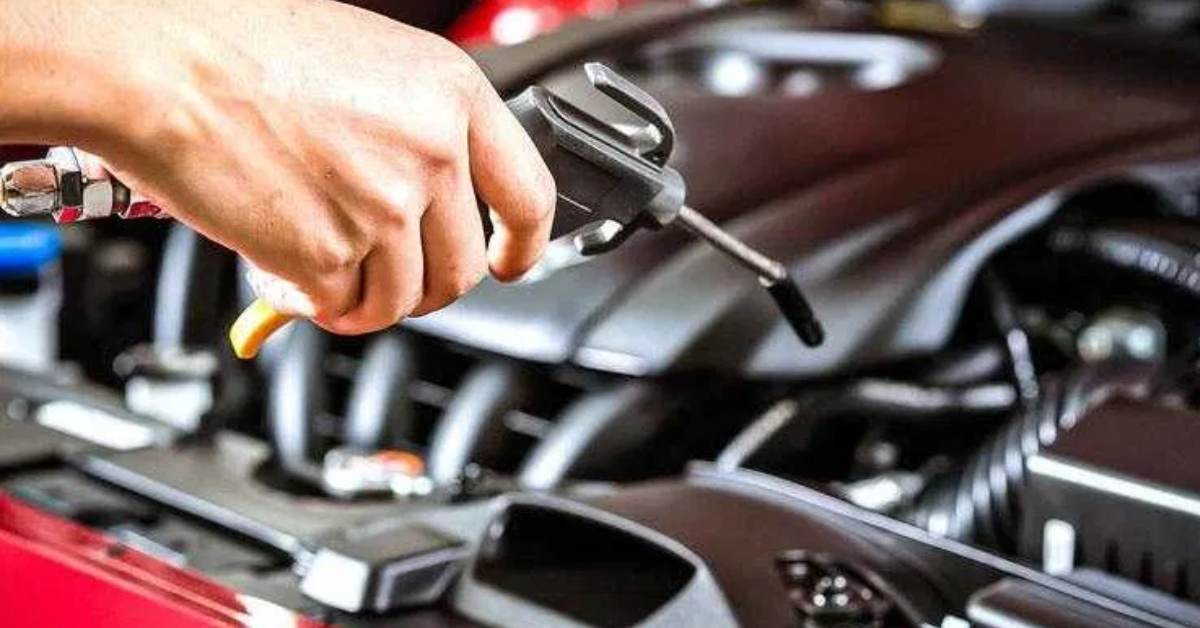
Proper maintenance of the 6-gauge battery cables will ensure proper functionality and durability. Regular inspections should include checking for damage to insulation, corrosion at the terminal, and proper attachment at the posts of the battery.
Clean the contacts with a wire brush and apply dielectric grease to prevent oxidation. Cables that show signs of wear, damage, or corrosion must be replaced for reliability of the system. Overheating is prevented through temperature monitoring in operation.
Although 6-gauge cables handle high currents quite well, excessive heat is indicative of loose connections or undersized cables for the application. Voltage drop across the cable length can be verified through professional testing to ensure that there is an efficient power transfer and potential issues can be identified before they become a problem.
See Also Read: what dia is 3 gauge car battery cable
FAQs
What is the maximum current rating for 6 gauge battery cable?
6 gauge battery cable can handle up to 75 amps continuously and 120 amps intermittently under standard conditions.
Can I use 6 gauge cable for my car audio amplifier?
Yes, 6 gauge cable is suitable for most car audio amplifiers up to 1000 watts RMS, providing adequate current flow for reliable operation.
How do I properly terminate 6 gauge battery cable?
Use appropriate-sized copper lugs and a professional crimping tool, followed by heat shrink tubing application for weather protection.
What’s the difference between SGR and SGX cable types?
SGR is standard flexibility for general use, while SGX offers maximum flexibility and durability for demanding applications.
How often should I inspect my battery cables?
Inspect battery cables every 6 months or 6,000 miles, checking for corrosion, damage, and secure connections.
Conclusion
The 6 gauge battery cable is very versatile and reliable for a wide range of automotive, marine, and solar power applications. Its diameter is 0.162-inch (4.11mm), and it can handle high currents while offering a number of insulation options and flexibility grades to suit many professional installations.
Hence, proper installation and maintenance of specifications ensure optimal performance and long life. Although offering SGR, SGT, and SGX variants, this type of cable selection and installation can provide a reliable power distribution system to various electrical systems on efficiency and safety standards.
Does Hot Weather Affect Hybrid Car Batteries

Hi! I’m the admin of Drive Cars Pedia, where I share my passion for cars with you. From reviews to tips, I provide valuable info to help you make informed decisions. Enjoy your visit!
